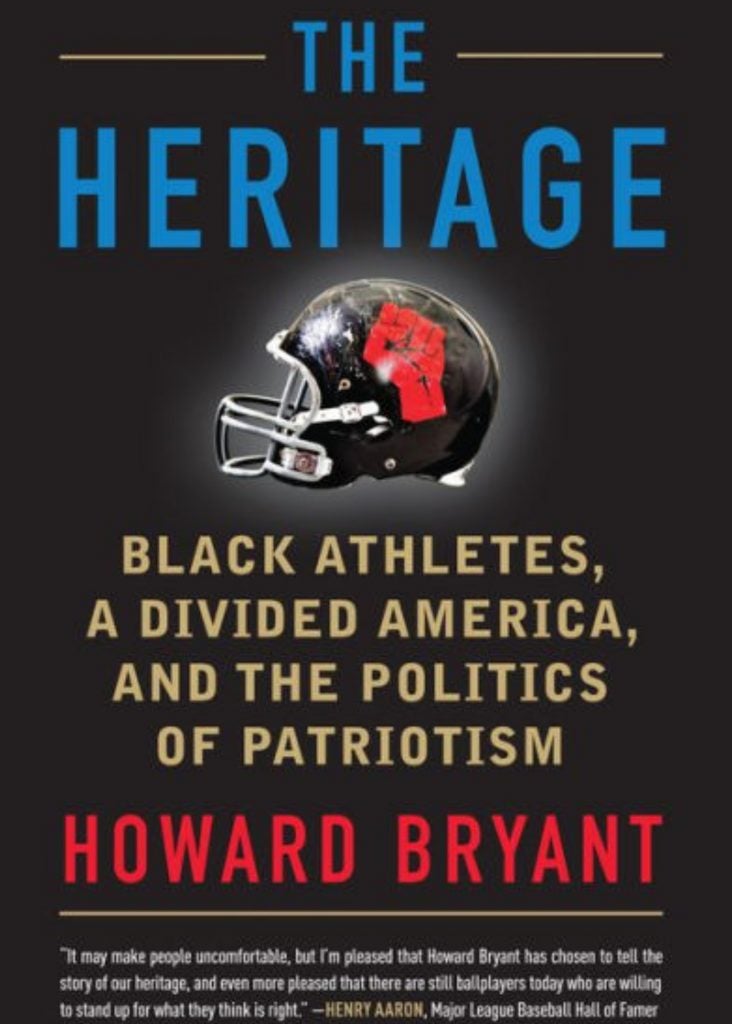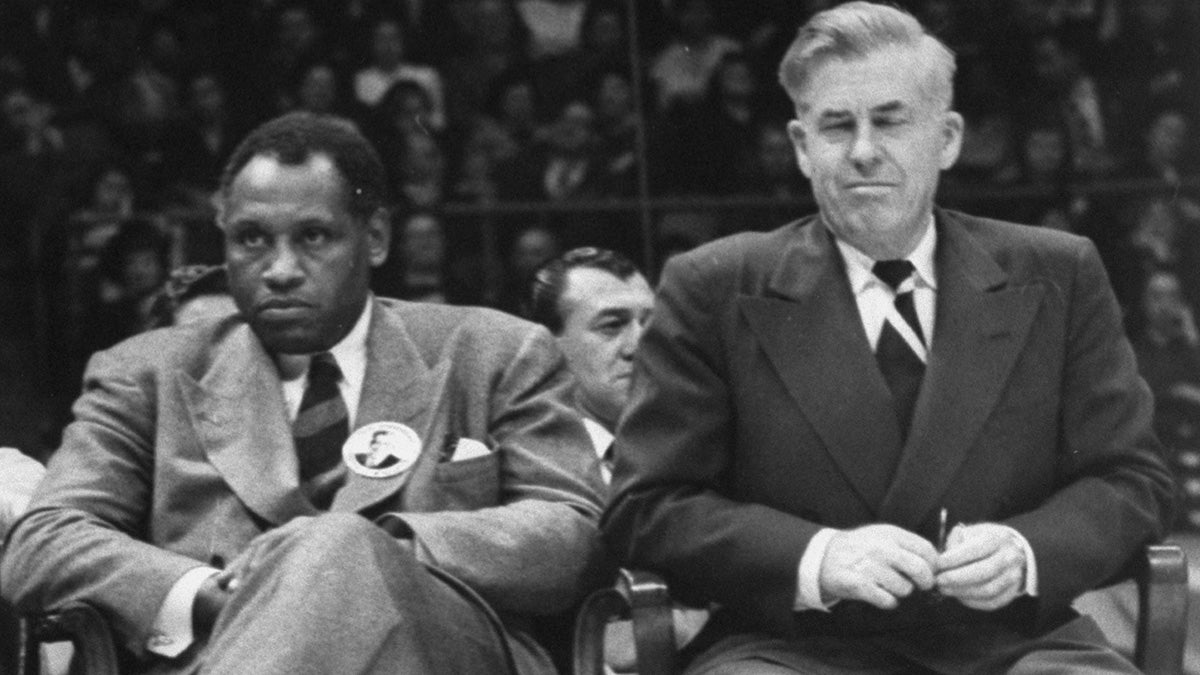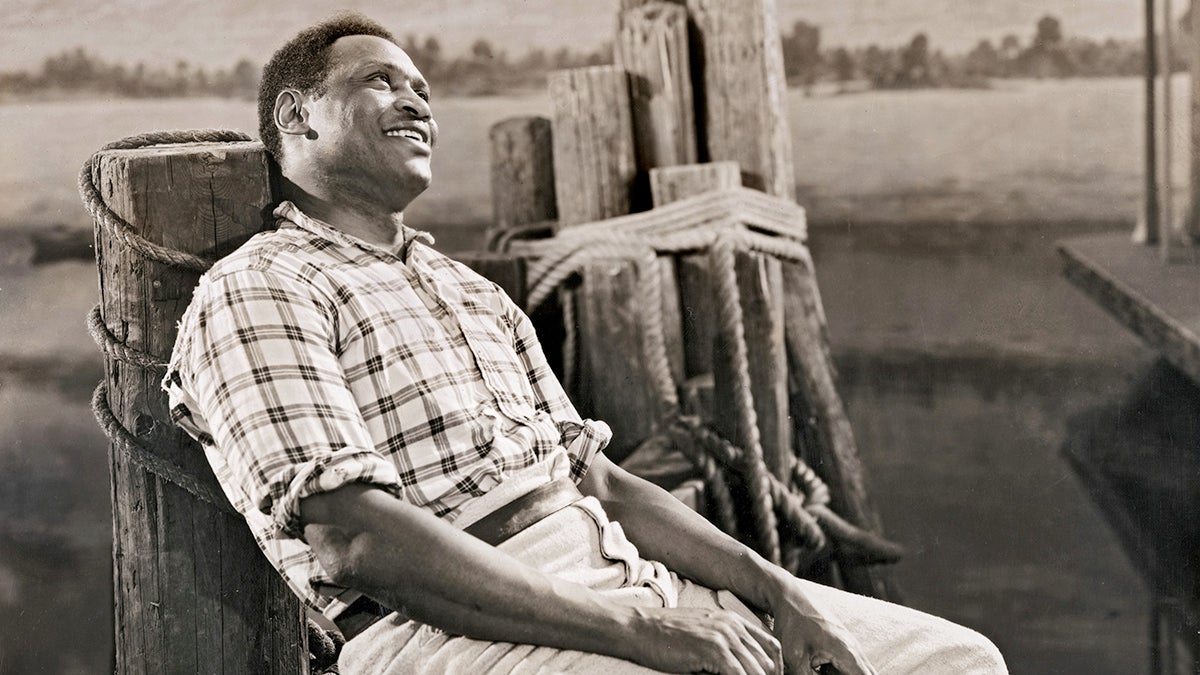New book draws line from Paul Robeson to today's athlete protests

Summer is a time for relaxing reading by the pool or shore. But what can you read to keep you up to date with issues impacting sport? Today, Global Sport Institute CEO Kenneth Shropshire reviews his must-read of the summer.
The Heritage: Black Athletes, a Divided America and the Politics of Patriotism, by Howard Bryant
The Heritage should top your summer beach reading list if you want to make sense of this National Football League-presidential-led intersection of sports, politics and race. The book’s author, Howard Bryant, can serve as your guide to understanding an issue that is much deeper than the modern-day, inappropriately labeled “anthem protest.”

What we are witnessing is the clash between a re-emerging heritage of protest by African-American athletes and American political leadership that has been largely silent about the simultaneous re-emergence of racism, particularly with regard to police brutality. The protests against police brutality have primarily taken the form of kneeling during the national anthem, thus the anthem protest misnomer. This issue filled the void that had existed since previous athlete activism focused on achieving equal rights for all citizens. Bryant quotes Dr. Harry Edwards as noting the void was due to the absence of a “sustained ideology” for protest. This violence against black men amplified by social media provided the previously lacking unifying element.
The May 24 decision by NFL owners that players can either stay in the locker room or be on the field and salute the flag reignites what I believe was a dying fire. The football ownership edict essentially said to players: “We are daring you to protest, to exercise that most American of citizenship rights. If you come out and don’t stand for the anthem, your team will be fined.” This unnecessary policy — the protests were on a natural decline — clearly aligns the league with the position expressed by President Donald Trump. Trump supports the new policy and says to players who don’t stand “I don’t think people should be staying in the locker rooms,” Trump told Fox News. “You have to stand proudly for the national anthem or you shouldn’t be playing, you shouldn’t be there. Maybe you shouldn’t be in the country.” This statement resonated beyond dog whistle levels to the men of the largely African-American league, rising to demeaning and racist.
Bryant recalls what Paul Robeson said when he was similarly invited to leave the country. Who was Paul Robeson? He was a triple threat with world-class talents as a singer, actor and athlete. He was an All-American football player at Rutgers and played in an early iteration of the NFL in 1921. He starred at both the collegiate and professional levels in football before his political activism and the political response squashed his career.
 Robeson was alleged to be a communist and traveled frequently to Russia. (Ironically, a close Russia connection was problematic in that era as well.) It was a 1949 speech that ramped up his troubles and prompted Jackie Robinson to be summoned by the House Un-American Activities Committee to testify and counter the opinion of another famous black man. Robeson said, “Why should the Negroes ever fight against the only nations of the world where racial discrimination is prohibited, and where the people can live freely? Never! I can assure you, they will never fight against either the Soviet Union or the peoples’ democracies.”
Robeson was alleged to be a communist and traveled frequently to Russia. (Ironically, a close Russia connection was problematic in that era as well.) It was a 1949 speech that ramped up his troubles and prompted Jackie Robinson to be summoned by the House Un-American Activities Committee to testify and counter the opinion of another famous black man. Robeson said, “Why should the Negroes ever fight against the only nations of the world where racial discrimination is prohibited, and where the people can live freely? Never! I can assure you, they will never fight against either the Soviet Union or the peoples’ democracies.”
Years later, in a hearing where he sought the return of his passport, he was asked by the House Un-American Activities committee why he didn’t live outside of the United States:
“Because my father was a slave, and my people died to build this country, and I’m going to stay right here and have a part of it, just like you … no fascist-minded people like you will drive me from it. Is that clear?” That was almost three quarters of a century ago.
This NFL policy announcement occurred on the same day the leadership of the Milwaukee police department apologized for wrongfully shocking a black man with a Taser. That man happened to be an NBA player, the Milwaukee Bucks’ Sterling Brown. He had illegally parked across handicapped spaces in front of a Milwaukee Walgreens. The police body cam video showed Brown seemingly prepared to receive his parking ticket in the same spirit as any American.
But what followed was violent treatment by Milwaukee’s finest, ending in his tasing. Similar encounters have impacted other NBA players, including an incident in which police broke Thabo Sefolosha’s leg in an unlawful arrest. This sort of event represented precisely what the player protests had been focused upon and the NFL policy is now determined to squelch.
What was clear in the NFL policy vote was the intent: to please President Trump and fans ruffled by protests. Clear, too, was a disrespect for the bargaining unit of the players, the National Football League Players Association. The NFLPA issued a statement decrying that the union had not been consulted on this final policy. The players who had found their “sustained ideology” were being scolded.
These converging events make this as good a time as any to step back and ask how patriotism became so entangled in American sport. Why this convergence and why this vitriolic response to protest taking place during the Star Spangled Banner? The best guide to that journey is Bryant’s book.
I love books I wish I had written. Even more so those that I wish I had the narrative chops to deliver. Howard Bryant has written that book. Anyone who wants to understand athlete activism, the role of patriotism and the place all of this has in history should take the time to march through The Heritage.
Bryant refreshes Jackie Robinson’s story, going beyond the integration story of 1947. Robinson’s lesser-known activist actions while in the military and his political stances are explored. Bryant makes sure those who know only the famed integration moment or maybe the negative of testifying against the great and largely forgotten Robeson know that in truth his activism was boundless and in many ways the model for athletes who followed.
Woven throughout Bryant’s analysis is the man I’ve always believed to be the athlete activist who sacrificed the most, Robeson. The man who Jackie Robinson testified against in Congress was once the most famous black man in America. Robeson is forgotten by many for his role as the turbine of modern activism, largely erased from our history books. But, as I noted above, many of his words are ready-made for today’s political environment.
Robeson was a global star, and his passport and, effectively, his career were revoked in the early 1950s. I researched and wrote a paper on that case while in law school. This was the 1970s and at the time there had not been even a modest revival of his life. I knew little about the man before then. I only decided to look more deeply into his life to write a mandatory paper and a curiosity that had been aroused as he was one of the first African-American graduates of Columbia Law, where I was then a student decades later.
Bryant writes that athletes and activism grew as the athlete sector in society represented the “first fully mainstreamed” black employees in America. That and their profile provided a previously nonexistent level of power. He highlights, too, the most important facet for what he calls the heritage of protest, a “sustained ideology.”
Athlete activism ramped up in 1968 with that notable Mexico City Olympic victory stand moment with John Carlos and Tommie Smith, but died via the raceless and apolitical celebrity of O.J. Simpson. The casket nails were supplied by the even more transcending commercial success of Michael Jordan and driven in by Tiger Woods. The idea of being commercially successful as an athlete by being raceless and apolitical contrasted vividly with the non-existent endorsement careers of activists Jim Brown, John Carlos, Tommie Smith and Muhammad Ali.
The journey the reader is taken on is the manufactured connection between patriotism and sport. Most know the corner was turned after Sept. 11, 2001 with the Yankees playing a prominent role being New York based and on a championship run.
But not all know that there was a reluctance based on reasons that are quite American, involving competition and capitalism. Bryant discusses the other New York team — the Mets — making more successful efforts to address the patriotic moment and the reluctance by the Yankees to engage with the issues, being overcome in part by wanting to be better at patriotism than the crosstown rival.
It is that 9/11 fervor that Bryant focuses on as the merger moment, where the occasional became the common — the addition of God Bless America in the seventh inning, which had been the exclusive province of Take Me Out to the Ball Game.
Then there is a similar manufactured merging of police with the military. This again, is not the way it always has been. The police are not the military.
Bryant walks us through how the hand-me-down military equipment, including armored vehicles and assault weapons, ended up in the hands of our neighborhood police forces. This was on full display in the police brutality protests that took place in Ferguson, Mo.
It was in 2014 and near Ferguson, where members of the then-St. Louis Rams may have begun this modern era of athlete activism. This was two years after the LeBron James-led Miami Heat took a widely circulated photo of the team dressed in hoodies in response to the killing of Trayvon Martin. This Rams moment is where Bryant sees the connection with and the revival of the past, reconnecting the link of player activism going back to Jackie Robinson.
I’ll refrain from being the spoiler in the details. But to understand and truly make your determination of who is right in all of this or whether or not to support or participate, this work is a must read. Beyond the obscure St. Louis Rams players, LeBron James and Carmelo Anthony stand out as leaders in this transition period, leading us to the ongoing saga of Colin Kaepernick and Eric Reid, to the disdain of many including President Trump.

No book covers every facet of a topic. I would have provided a deep exploration of Jack Johnson, the first black heavyweight champion of the world. During his time, federal legislation banned the showing of fight films in hopes that race riots would not be fanned by images of a black man beating a white. Johnson was brought down by the Mann Act for transporting a white woman across state lines. But Bryant is pretty explicit in connecting the police brutality dots and that is anchored in the Robinson-Robeson intersection. Ironically, the day after the NFL announcement, Trump praised Jack Johnson and granted a posthumous presidential pardon. Coupled with the Sterling Brown incident, it made for a most stunning week.
Many have a bad taste about the Jack Johnson pardon, as many chroniclers find that other than his love for white women in a forbidden age, there was no actual criminality that needed decades-late forgiveness. The pardoning was a hollow gesture to point to in deflecting critique for support of actions silencing the protest by NFL athletes.
From the impact of shows like “Cops” to the redlining and other housing schemes by the federal government as outlined in Richard Rothstein’s, “The Color of Law: A Forgotten History of How Our Government Segregated America,” the depth is well beyond the basic trope of baseball being as American as apple pie. Bryant provides a timeline that brings us to today.
Reading The Heritage and the events of last week caused me to reflect on the “green-light” letter, written by President Franklin Delano Roosevelt to then-baseball commissioner Kenesaw Mountain Landis, as a good guide on presidential intervention in sport. Landis wrote Roosevelt to ask if baseball games should be played during World War II. Roosevelt initially balked saying, “As you will, of course, realize the final decision about the baseball season must rest with you and the Baseball club owners — so what I am going to say is solely a personal and not an official point of view. I honestly feel that it would be best for the country to keep baseball going.”
At least he had a dash before his intervening opinion. But Roosevelt could not resist staying out of the sports business either. This presidential meddling is nothing new.
Roosevelt penciled out some numbers impacting employment but most practically he wrote, “Baseball provides a recreation which does not last over two hours or two hours and a half, and which can be got for very little cost.” Yes, the good old days. Sport was viewed as an escape. A break from politics. Perhaps that mythical past is what motivates the animus that exists against sports focused protests today.
But, in fact, there has rarely been a moment where sport is not intertwined with the political. Since the founding of the modern Olympics, nations have boycotted for political reasons. Another Roosevelt — Teddy was largely responsible for the creation of the NCAA after football players were dying in unregulated games.
I drive or walk past a mural of Paul Robeson almost daily when I am in Philadelphia, where he once lived. It is on the side of a building in the largely black West Philadelphia community. He looks down on a chain link fence and often the garbage of the day on eastbound Chestnut Street at 45th Street. I wonder how many drive by this magnificent mural with little understanding who Robeson was and how much he has to do with the kneeling of today? The caption on the bottom of the mural, if one interpolates it fully, is what the heritage, a sustained ideology, desires for all of us: “Citizen of the World.”
Kenneth L. Shropshire is the CEO of the Global Sport Institute and adidas Distinguished Professor of Global Sport as Arizona State University and Endowed Professor Emeritus at the Wharton School, University of Pennsylvania. Among his 13 books is Sport Matters: Leadership Power and the Quest for Respect in Sports
Related Articles
Athlete activism is on the rise, but so is the backlash
Athlete activism has global, historical aspects
Opinion: Activist Philadelphia Eagles are on the clock with invitation to White House


